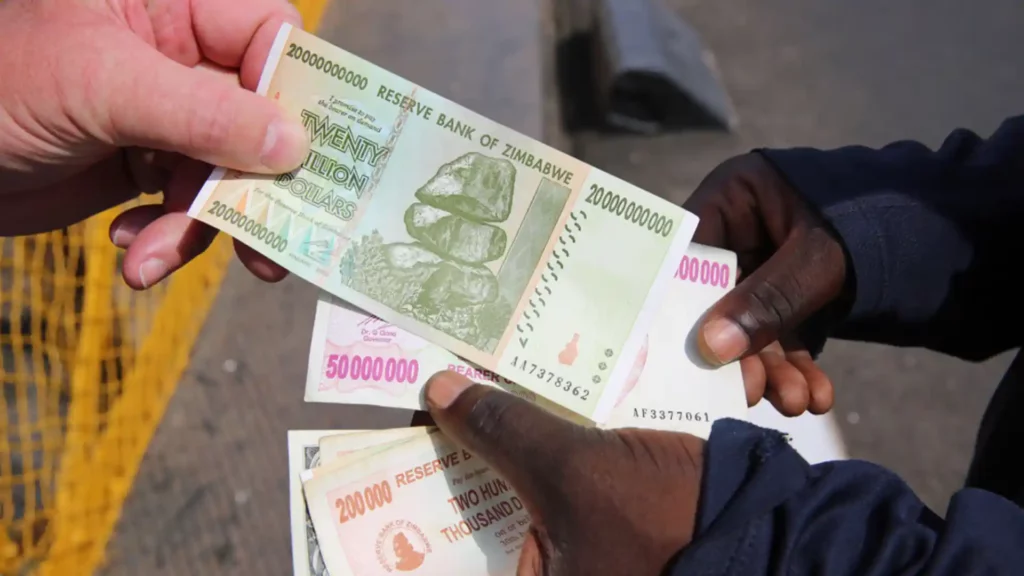Zimbabwe recently introduced another cash to supplant one that has been battered by depreciation and frequently outright rejection by the people. The ZiG was presented electronically toward the beginning of April, yet people can now utilize banknotes and coins. It’s the southern African country’s most recent endeavor to end a long-running currency crisis underlining its diligent monetary difficulties.
The public authority had recently drifted different plans to replace the Zimbabwe dollar, including launching gold coins to control inflation and, even trying out digital currency. Since it was introduced electronically on April 5, the ZiG — short for Zimbabwe Gold and supported by the country’s gold reserves— has all the earmarks of going down a similar way of question, with some government departments declining to acknowledge it.
The ZiG is the 6th money Zimbabwe has utilized since the tremendous 2009 breakdown of the Zimbabwe dollar in the midst of excessive inflation of 5 billion percent, one of the world’s most terrible cash crunches to date. That set off a turbulent series of events: first, the U.S. dollar was permitted as legal tender, then restricted, then, at that point, unbanned.
A new “bond note” became legal tender, and the Zimbabwe dollar was once again introduced before the gold coins and digital currency were tried. In any case, nothing brought any cash security, and the U.S. dollar stayed the most trusted for Zimbabweans.
A few divisions, similar to the workplace that issues and reestablishes identifications, acknowledge just U.S. dollars. Simultaneously, different organizations are being requested to just utilize the ZiG, and deal with repercussions on the off chance that they don’t.
Numerous people in Zimbabwe actually recall when a 100 trillion Zimbabwe dollar banknote was imprinted in 2009 at the level of excessive inflation to stay aware of spiraling prices. At a certain point, a portion of bread cost more than 500 million Zimbabwe dollars.
Costs would change from when clients strolled into a supermarket to when they arranged to pay at the sales register. Eateries quit showing costs on menus as they would go up throughout the span of a supper. Individuals carried around sacks loaded down with banknotes. Investment funds and benefits became useless.
Across Zimbabwe, the U.S. dollar is still generally utilized, for paying rent and school expenses to purchasing food. Many take their local currency to the black market to trade for dollars since banks don’t give out U.S. dollars. Certain individuals stash their U.S. dollars at home.
The public authority of President Emmerson Mnangagwa has adopted a firm stance strategy — many bootleg market money sellers were captured and have been in pretrial confinement for quite a long time, blamed for attempting to subvert the new cash. After the ZiG was presented electronically, ledgers of certain organizations were frozen, blamed by the public authority for dismissing the new money. Specialists say they have confidence in the ZiG since it’s upheld by the country’s gold reserves.
ZiG Stoops to the Lowest
Zimbabwe’s gold-supported ZiG money has debilitated to its lowest level against the US dollar since its launch. The money is exchanging at 13.67 to the dollar, as per information posted Monday on the Reserve Bank of Zimbabwe’s site, a decline of 0.8% from its most memorable day of exchanging at 13.56 per dollar on April 8.
It is supported by 2.5 lots of gold and $100 million in foreign money holds held by the central bank. Officials need to look for full convertibility of the unit at a phase to lift its allure, Finance Minister Mthuli Ncube said in a May 2 meeting. The initial steps of accomplishing convertibility might incorporate drawing in with Zimbabwe’s biggest exchanging accomplices to accept payment in the new currency, said central bank deputy governor Innocent Matshe.
